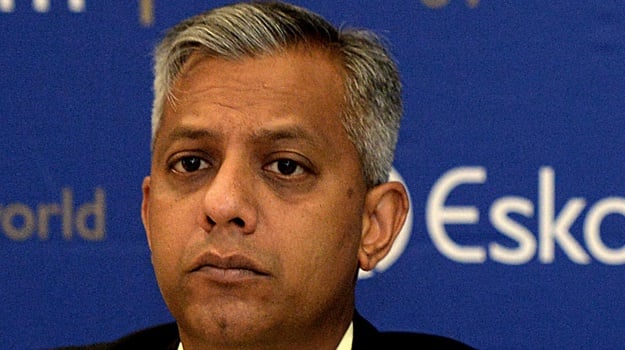On Thursday Eskom, our national power utility, surprised the country by announcing Stage 1 load shedding.
This first-tier power generation reduction saw Eskom cut the power it produced by 1 000 megawatts. While not as severe as the nationwide revolving blackouts seen nearly a decade ago, the announcement was a reminder of the power crisis in 2008 that literally plunged sections of the country into darkness.
On Friday morning, Eskom cranked its load shedding efforts to Stage 2, doubling the generation reduction to 2 000 megawatts after the "loss of additional generation units overnight". The power rationing continued on Saturday.
The rolling blackouts brought about by load shedding is tangible manifestation of the crisis Eskom chairperson Jabu Mabuza highlighted during a press release earlier this week - before the load shedding started.
News24 contacted industry expert Chris Yelland to explain the issues facing Eskom:
Financial
- Eskom is facing a deadly cocktail of increasing coal and employment costs, alongside stagnant revenue growth and ever-rising debt. While the National Energy Regulator of South Africa is granting some of the increases Eskom seeks, the decline in sales is hampering revenue growth. In essence, Eskom is selling less electricity for more, keeping the revenue generated relatively the same. Conversely, employment costs are increasing at rates far above inflation - and coal prices, its single biggest expense, have also seen considerable increases in recent years.
- Delays in the construction and synchronisation of the Kusile and Medupi plants have added an additional strain on Eskom's finances. Cost overruns and delays have seen these construction projects nearly doubling their initial costs. The increased prices, beyond simply being more expensive, also has a spillover on the utility's future finances once these projects become operational. The depreciation of such assets are provided for in the financial statements of Eskom, meaning the more expensive the plants, the bigger the depreciation costs in the years following the construction.
- Eskom has seen a tremendous rise in its borrowing costs, owing most to its plummeting credit rating. From a AAA investment rating, bad management has seen Eskom hover slightly above total junk status. Eskom has a total debt of about R419bn. To put this into perspective, Treasury’s total expected personal income tax revenue for the 2018/2019 year is R505.8bn. Simply servicing this debt will set the utility back R15bn for the year ending March 2019.
Municipalities owe the power utility R17bn, an increase of 25%, with initiatives to encourage payment of the arrears amounts having little effect. Another R13bn is tied up in Soweto's SPU (residential and small power users) which Eskom provisions with power directly. These debts will in all likelihood be written off.
Half-year profit has plummeted by 89% to only R671m by September 2018, and the power utility has budgeted for a loss of more than R11.2bn. But Eskom has already indicated that the actual loss will exceed even the R11bn figure.
Operational
- Bad, and even criminal, management has wracked the power utility for the better part of a decade. Eskom announced that 12 criminal charges have been lodged, 9 of which involve senior executives. This includes lifestyle audits for senior management.
- The performance of Eskom's power grid is defined using the "energy availability factor", a relative measurement of how much of Eskom's generation capacity is in use and running at peak efficiency. At present, Eskom is operating at about 68% of its maximum Energy Availability Factor, prompting load shedding.
- The reduced EAF is caused by planned and unplanned maintenance, as well as partial load losses brought about by low quality or wet coal. In unique instances, Eskom will reduce a plant's EAF to compensate for aging infrastructure or preventative throttling of the plant's output. Load shedding has again been implemented this week, sparked by a loss of generation units. This was cranked up to Stage 2 load shedding on Friday morning as Eskom looks to free up 2000 megawatts;
- The supply of coal is another major issue facing the utility. Dwindling stockpiles have resulted 11 out of 15 coal-fired plants left with less than 20 days' worth of coal. Five of these, including the three stations supplied by the Gupta owned Tegeta Exploration, have less than 10 days worth of coal in reserve. Much of this was as a result of shortsighted and possibly criminal mismanagement by Eskom executives.
- Eskom procured coal at highly competitive rates using its cost-plus mines. In essence, Eskom owned, financed and maintained these mines, but outsourced the operational (mining) activities to third parties. Reduced capital expenditure, meant to sink new shafts and expand the current mines, meant the output of these cost-plus mines reduced to the extent that the newer mines preferred by Eskom at the time could no longer meet the shortfall.
Environmental
- Eskom's environmental strategy appears to be a non-starter. Eskom simply cannot afford to implement the expensive, yet necessary, retro-fitments needed to align its power plants with environmental targets. On the one hand Eskom doesn't have the cash to do so, and on the other hand it cannot afford to take generation capacity offline to install the necessary modifications. Emissions from Eskom plants cause 333 premature deaths per year. The health costs of these emission was calculated at R17.6bn per year.
Eskom has in turn presented a five point plan it hopes will steer the ship around. The plan, also detailed during the session focused on addressing poor governance and controls, improving its financial situation and, more importantly, completing the first phase of a strategic review of the utility.
* Sign up to Fin24's top news in your inbox: SUBSCRIBE TO FIN24 NEWSLETTER




 Publications
Publications
 Partners
Partners










